Summer Bulb Care & Planting Tips
When you say bulbs, most people think of spring blooming bulbs such as daffodils and tulips, but there is a whole range of summer bulbs that grace our gardens. Some are winter hardy and are grown as perennials, while others are tender and must be lifted and stored for the winter months.
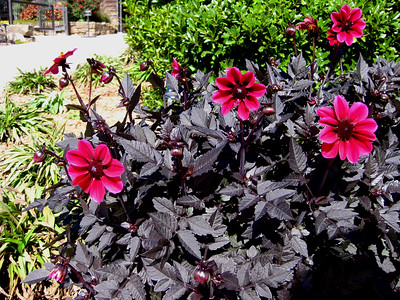
Summer bulbs include elephant ears, caladiums, dahlias, gladiolus, lilies, lycoris (surprise lilies), amaryllis and pineapple lilies. Summer bulbs can be just as easy to grow as daffodils and give you loads of color in foliage and/or flowers, and will actually bloom longer than their spring counterparts.
What are bulbs?
Bulbs are self-sufficient storage organs, and are versatile in the landscape. There are bulbs for partial shade as well as full sun. All bulbous plants have similar life cycles. They go through periods of growth and flowering, followed by a dormancy period. Bulbs are usually sold in their dormant, dry state. When planted, they being to initiate rooms, and the stems inside the bulbs begin to grow. The plants utilize their stored food reserves, and the shoots begin to emerge. When they begin flowering, the storage organ or bulb, is empty of food. After bloom, they need to replenish the storage organ for the upcoming dormancy.
How do I choose bulbs?
When choosing bulbs ( or rhizomes, corms, and tubers, which we collectively call bulbs, and are generally planted in the same manner), look for large bulbs, which are firm and blemish free. The size of the bulb determines the size of the flower. Remember, everything is already contained inside your bulb when you purchase them. Quality bulbs will give you a wonderful show, and should keep giving for years with a little care. Bargain bulbs may not end up being such a bargain.
How do I plant bulbs?
When planting your bulbs, you can dig individual holes for each bulb (which can be difficult in our rocky soils) or mass plant. It is often easier to dig up a larger planting area, scatter your bulbs in, and then fill the soil back in. A general rule of planting depth is to plant two to three times the size of the bulb, deep in the ground. Small bulbs are planted shallow, while big bulbs need a deeper hole. You can layer different bulbs in the same planting area. Choose a site with good drainage–especially in the winter. Standing water and bulbs is not a good combination. When planting bulbs, grouping them together in clusters will make a stronger impact than a single row of bulbs.
What are some popular Summer Bulbs?
Caladiums are annuals and must be replanted each year, or they can be lifted and stored for the winter before a killing frost.
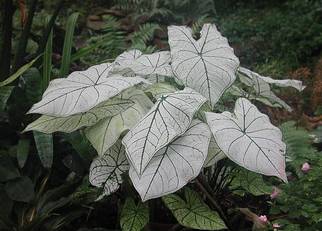
Some caladium bulbs will do well in full sun, but there are so many sun-loving options that one may relegate this bulb to the shade or partial shade areas of the garden. They will be up almost instantly in warm soils, since they are heat lovers. Caladiums are heat-loving plants, so don't be eager to plant them early in the spring. Planting caladiums in cold soil can stunt their growth cycle.
If you can’t find the bulbs, you can find caladium plants that are already growing in a pot. The foliage can come in shades of white, pink or red with many different leaf patterns. If you have heavy shade, you may consider choosing the light pink or white varieties to brighten things up.
Still have questions about caladium? Check out our reference desk Q & A
Elephant ears is the common name for a variety of plants including alocasia, colocasia and xanthosoma.
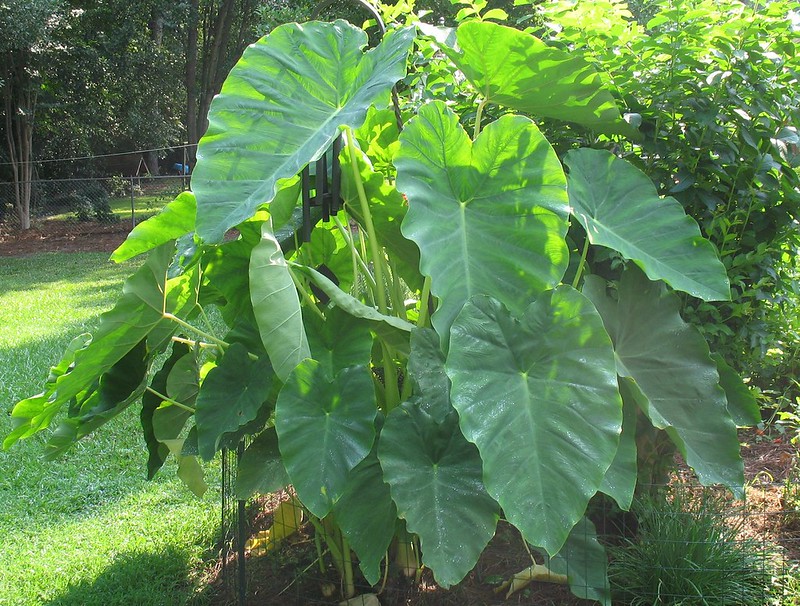
Regardless of what you call them, most of them get large, although dwarf ones are available. The leaf color can vary from the common green elephant ear to black ones (Black Magic) to lime green (Lime Zinger) to mottled green and purple (Mojito) with many other options.
Elephant ears add a bold, tropical look to the landscape in borders, mass plantings or in containers. While they will grow ok in pots, they do much better and get larger if planted in the ground. They do best with morning sun or filtered sun and afternoon shade. Provide copious water and fertilizer as the plants grow, especially if you are growing them in containers, as they are heavy feeders.
Common elephant ears are winter hardy statewide and should come back year after year, but some of the more decorative varieties with variegated or dark foliage are only moderately hardy. To protect your investment and to ensure you have these bulbs every year, you should lift and store them either before a frost or immediately after one.
Still have questions about elephant ears? Check out our reference desk Q & A
Lycoris (surprise lilies), cannas, lilies, and pineapple lilies (Euchomis) are considered winter hardy in Arkansas, and can be left in the ground from year to year.
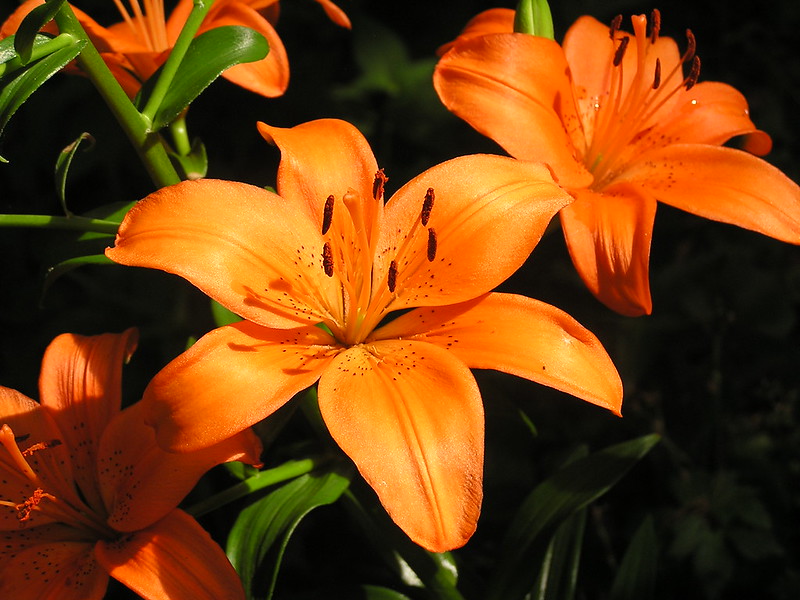
Canna lilies do best in full sun, but do like water and nutrition. Flower colors can range from pink, red, yellow and orange, while foliage can be solid green, red, or yellow and green striped (Bengal Tiger) or multi-colored stripe (Tropicana). There are tall varieties getting 6 feet tall or higher, but dwarf introductions can be in the 3 foot range. They multiply quickly, so consider dividing them every few years to improve their blooming. These flowers can be divided as they emerge in the spring, or you can lift the bulbs in the fall and store for the winter, then divide and replant in the spring.
The Asiatic lilies are very easy to grow, along with the orange and black spotted tiger lilies, and the large dramatic oriental lilies which includes the stargazer lily.
Plant lilies in a well-drained site in full sun and enjoy their magnificent blooms annually. For the taller varieties, perennial stakes will help to keep them upright. The foliage can be cut back when it begins to turn yellow and starts the die-back process. Lilies that are too crowded, can also be dug, divided and then immediately replanted in the fall.
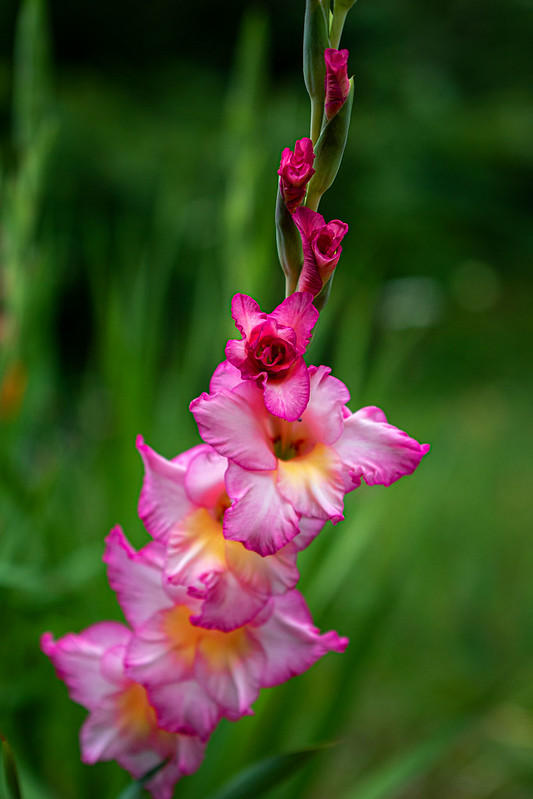
A variety of gladiolus bulbs are available for the garden. Some are hardier than others. Just like with caladiums, some gardeners treat their gladiolus as annuals and plant new bulbs each spring, but they too can be lifted and stored for the winter.
They are treated a little differently than other summer bulbs, since gladiolus corms can be stored in the open, without the protection of peat moss or other filler. They produce corms which can be dug any time after the foliage has died back. Let them air dry for 2-3 weeks, then store them loose in a paper or mesh bag.
Gladiolus bulbs are great cut flowers. Outside in the garden they too would benefit from a perennial stake to hold them upright. Many gardeners plant a row of these next to their vegetable garden and use them indoors all summer long. Cut just the flower stalk when the first bloom begins to open and they can easily last two weeks or more inside. Leave the foliage behind to generate food so the bulbs will come back next year.
Many gardeners stock up during the holiday season on amaryllis bulbs.
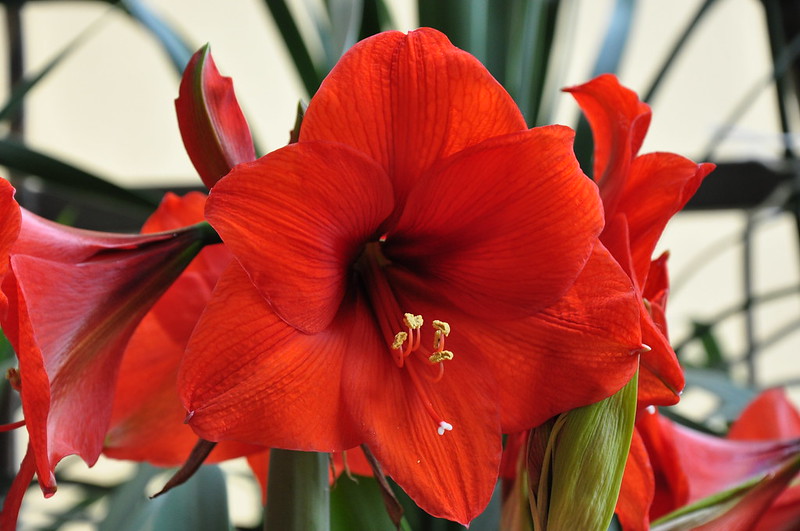
The showy large bulbs are not supposed to survive our winters outdoors, but it can be successful. Many gardeners wait until a killing frost and then add an extra layer of mulch and wait until spring to check on survival. Others lift the bulbs as fall is ending and cut the foliage off. They then bring them indoors, pot them up and store in a cool, dry place and wait for new growth to begin. Once they see the bulbs begin to sprout, begin watering and move them into a sunny location. Typically they will be in bloom in 6-8 weeks indoors.
The foliage grows for 8-10 weeks then disappears. 6-8 weeks later the naked stems pop up with beautiful pink trumpet-shaped blooms. The red spider-like surprise lily (Lycoris radiata) keeps its foliage all winter. It dies back in the spring and the plants pop up with their naked stems with red blooms in late summer through early fall. While red is the most common, there are yellow, orange and white blooming amaryllis as well.
Still have questions? Try digging up answers in our reference desk Q & A
The list above is just a sprinkling of summer bulbs, there are a wide range of others to choose from. Do your homework when planning your garden. Make sure you have something blooming in all seasons, and adding some of these low care summer-blooming bulbs into your summer-time mix will give you plenty of color.
Download the Landscaping Problem Guide
Additional Resources
- Reference Desk Q & A: Bulbs
- In the Garden in Arkansas
- Yard and Garden Resource Library
- Arkansas Home Landscaping Resources